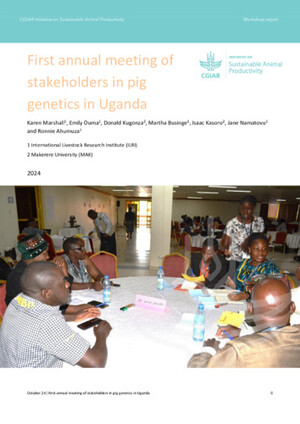
The Pig Genetic-Resource Value Chain in Rwanda
Abstract
Over the past decade, the pig sector in Rwanda has experienced significant growth driven by both domestic and export demand for pork. This has resulted in a nearly twofold increase in the national pig herd, with the number of pigs rising from 684,708 in 2010 to an estimated 1,498,721 in 2022 (MINAGRI, 2022). Despite this growth, the pig value chain in Rwanda faces several challenges. Most of the pig farming is carried out by smallholders using low input systems, with limited access to technology, information, and services. Constraints include low productivity due to low adoption of technology, unstable and costly feed supply, high incidence of diseases, lack of organized pig breeding, and insufficient information and training for pig farmers. Furthermore, poor market infrastructure and an underdeveloped marketing system limit smallholder farmers' access to inputs and pig markets, resulting in reliance on middlemen and low profit margins. While there is potential for increased productivity and market development, interventions targeting feeds, herd health, genetics, and market linkages are needed to incentivize farmers and improve the overall performance of the pig value chain (Hirwa et al., 2022).
Citation
Marshall, K. and Hirwa, C. 2024. The Pig Genetic-Resource Value Chain in Rwanda. Nairobi, Kenya: ILRI.










